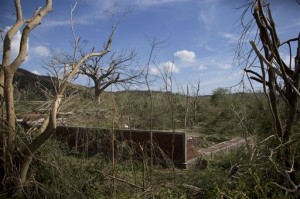Mexico has dodged a bullet, or a hurricane.
On Oct. 23, Hurricane Patricia became one of the largest hurricanes ever recorded. It was feared the storm would cause catastrophic amounts of damage in southwest Mexico.
But within 24 hours of the storm hitting land, The National Hurricane Center lowered the hurricane down to a tropical depression, meaning the storm had wind speeds of less than 39 miles per hour.

“So far, there are no reports of major damage from Patricia,” posted Mexican President Enrique Peña Nieto on Twitter.
While the more rural areas have sustained damage to buildings and infrastructure, the larger cities in the area avoided the worst of the storm.
Many of the buildings in the rural areas are poorly made with aluminum sheets according to Jamyn Jones, who served an LDS mission in the area.
“Pretty much everywhere you go you can find poor areas,” Jones said.
Jones said he hopes the Mexican government will help rebuild the damaged areas, but said he felt the locals were going to have to do most of it themselves.
There have been no reported fatalities from the hurricane so far. The lack of fatalities has partially come from the amount of civilians and tourists that were warned to evacuate the area. More than 10,000 people were evacuated to safer areas and those who remained were cautioned to stay inside.
Patricia could be the largest storm ever measured in the Western Hemisphere with wind speeds reaching up to 200 miles per hour and a surface pressure of 880 millibars (the typical pressure at sea level is 1,013 millibars) while it was still at sea.

However the storm died down very quickly once making it onto land. This was due in part to the rugged mountainous terrain in the area that helped block much of the wind. The path that the storm took spared all the major cities in the area from the worst of the storm.
Rain has been a large problem, however, with an anticipated 8-20 inches of rain for the area. The heavy rainfall has caused some mudslides and flooding in the more rural areas with the potential of more mudslides threatening some communities.
Patricia continued on into Texas where the heavy rains caused some highways to close and a train to derail.




